The Rider: An interview with Brady Jandreau
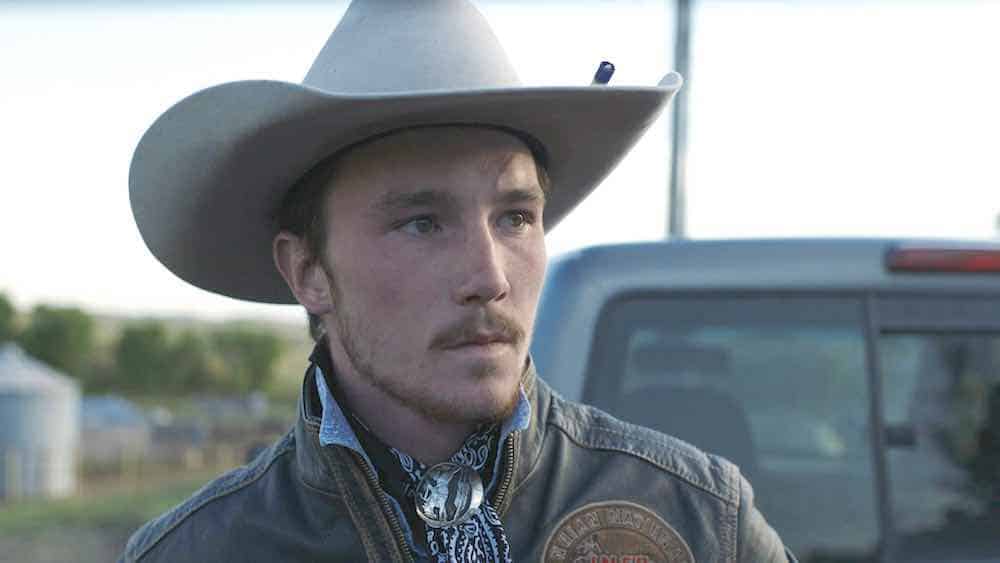
The Rider is the documentary-style film from Chinese-American director Chloé Zhao (Songs My Brothers Taught Me) starring real-life rodeo rider Brady Jandreau, alongside his sister Lily, father Tim and fellow rider Lane Scott, as a young man grappling with his identity and his future as a head injury thwarts his career as a bronco rider.
Drinking in the epic landscapes, stunning horse displays and dull supermarket interiors of its South Dakota setting, as well as every flicker of suppressed emotion in Brady’s rugged visage, the film is a visual masterpiece that finds both beauty and raw authenticity in its depiction of life for a young man in rural America. Zhao’s interpretation of Brady’s true story provides a fresh perspective on the stereotypical Western, quietly exploring the reality lying behind the illusion of rock-solid masculinity held in the image of a cowboy.
We had the pleasure of sitting down with Brady Jandreau ahead of the film’s release in London to discuss his life as rodeo rider and horse trainer, how he met Chloé while she was making her first feature film in South Dakota, 2015’s Songs My Brothers Taught Me, and how his head injury led to the director making a film loosely based on his life, starring the man himself.
Hi Brady, so lovely to meet you. Thanks for speaking with us.
The Rider is based loosely on you and your life – you can tell me how you first got involved with the film and how much of it is true reflection? It’s also your first time acting – how did you go about playing yourself?
It’s kinda like a fictionalised version, you know. I mean I would definitely draw the emotion from what I had already felt in the past whenever we were re-enacting a situation. But I’d say it’s only about 60% based on real events and about 40% complete fiction. And even like a lot of the things that really happened, when we re-enacted them they weren’t at the exact same place they happened in real life. Or someone else was there maybe or I would have reacted differently. I’d be like, “Chloé, I wouldn’t do that”, and she’d be like, “Well Brady Blackburn would, so get into character now!”. So, you know, I was acting the whole time. But I do believe that having already lived through some of these emotions it made it easier to draw upon what I’d already experienced.
Could you play around with it a bit yourself in the way you reacted to different situations, rewrite your own history if you wanted to?
Yeah well you know Chloé let me have the reins of those aspects at certain times but there were other times when she needed something very definite from me and, you know, I couldn’t just go with it.
And so tell me, how did you guys first meet and how did she first come across you and your story?
In the summertime I used to help my uncle, Todd O’Brian, down on Pine Ridge reservation. He runs the the Mill Shoe Angus Ranch near South Dakota, he has registered Angus beef cattle. I dropped out of college, gave up a full rodeo scholarship at Oklahoma State University to pursue my dreams of professional rodeo. So I bought my permit from PRCA, the Professional Rodeo Cowboy’s Association, and went back to rodeo on the Badlands Circuit, which is where my area is. And I needed a job, you know, to get down the road and pay for my entry fees and food and gas and hotel rooms. So I went back to work at Mill Shoe for Todd. And Chloé, her first movie, Songs My Brothers Taught Me, was shot also on the Pine Ridge reservation. That was her first movie there and her first movie at all, I guess, full length movie anyway. So she met a lot people in the first four years there before she started shooting. She had a lot of troubles along the way during the making of that film – it’s an excellent film, though, I recommend you see it. But it was a learning experience for her, not only in filmmaking, she says, but also of the area. So when she came back to the area, she felt like she hadn’t captured the Western lifestyle heritage of South Dakota and the reservation there, the Badlands, basically the full potential of it. And so that was basically what she set out to do on her next trip. But she don’t really know enough about that way of life, so she had to research. So she called Todd O’Brien and asked if she could come and stuff. So she came out and she was first drawn to me, I noticed, by my ability to work with wild horses.
So you were helping her to get an insight and understand more about the way of life there?
Yeah, she wanted to learn about cowboys. And Todd was like, “Take Chloé out”. And Chloé wanted to ride horses and milk cows and stuff so we put her on a really gentle horse, taught her how to ride and how to move cattle up the shoot what we were doing and how you sort them. She came back numerous times throughout the summer there and she kept riding with us, and after a while she talked to me about actually possibly acting in the film. And, you know, I kind of chuckled about it at first because I’d never done anything like that. And Chloé was the first person who ever who I ever really met who was involved in filmmaking, you know. And the cinematographer, Josh Richards, also came out a bunch of times; he would ride with us. Yeah, we had a lot of fun together, you know? We gained each other’s trust, we all really hit it off, got along very well. Chloé knew numerous people from the making of her first film so she basically already had all of “ins”, she already had a community to make this film.
So when did she decide to make the film about you and your life?
Actually we didn’t have an idea for the movie at all. We thought about a documentary, one that would follow me down the rodeo circuit, one of me just as a horse trainer. We even thought about a romance, maybe one just about me as a cowboy, not necessarily the best cowboy. Maybe just about me, a guy that works on a ranch, you know. We thought about all sorts of different things. Like, basically, documentaries of all of those aspects as well. So basically we didn’t have a story. Then about a year after I met Chloé, on April Fool’s day in 2016 I sustained my injury, it was a comminuted skull fracture at the Fargo PRCA Rodeo, in Fargo, North Dakota. Basically I was trying to hang on for the whistle, I was off a close, trying to hang on for a check, it was a pretty rank horse. I was actually in timing with her somewhat – she’s really hard to get in timing with, she’s roll-y and she changes her leads. And she’ll get lunge-y and then she’ll have a short one and it’s like, changing up the timing and it makes it very difficult. So you have to be one step ahead of her. When I came off, my foot hung in the stirrup and I swung underneath of her, and then she stepped on my head. And there’re three regions of my skull that were broken and two parts of my brain that were injured from the step. And then there was pretty bad brain bleeding but it cleared the other side of my skull. It didn’t knock me out initially, I actually went into a seizure when I was at the hospital about 11 minutes later. I remember everything.
That sounds horrific, it must have been incredibly painful to remain conscious?
It was fine, you know. I mean, I’m happy I remember it. Then I was in an induced coma and they did brain surgery on me. They cleared all the manure in there and the sand and all that out, there were tiny bone fragments they couldn’t restore at all. They put a big old metal plate in there and sewed up the intramuscular skull lining, put in 28 stitches or something, then put a gauze over the top of it and I had to wear that, at least until I got home. I basically demanded to be let loose, I was like, “I’m getting sick in here, I can’t take it in here anymore”, and they were like, “Ok, well if you want to leave, we can’t legally hold you, so as long as you can pass a series of tests to be cleared to leave”. So I just did the best I could, acting like I was walking for the cops like I was 16 again and had too much to drink. I passed all of my tests, probably not with flying colours. I would have to take medication orally and eat food and then as soon as they would walk out I would throw up. One of the biggest reasons though was because, number one, I had no nourishment when I was in the coma. Number two, I had been seven days without any chewing tobacco. I had chewed since I was six years old – I was 20 when I was injured so I‘d chewed for 14 years at that point.
How long did it take you to recover and eventually pick up again with Chloé?
Well, on the way home I put a bunch of chew in, I started eating better, I started to heal up a lot. And then after I did return home, I actually started riding horses again, you know, very well trained horses when it was like two weeks after my head injury. They instructed me not to lift over 10 pounds or even jog for over three months and then I would come back to the hospital to be cleared for things like that. But a month and a half after my head injury I went back training to wild horses again full time. Chloé had seen this video of a successful training, I was teaching a horse to drag a log from the back, imitating dragging a calf to the branding fire. It’s probably one of the most important aspects of ranch work, branding, to make sure that no one can come steal your cattle because they have your mark. Chloé saw this on Facebook and she called me – she would call me about once a week after my injury just to check in on me but still give me space so I could heal and rest and stuff at the same time. She called me just to talk to me about training horses and she was like, “Do think you’re going to go back to doing that? Go back to training wild horses someday?”, and I said, “Well I’ve been doing it for the last week or so”. And she was like, “What do you mean, why would you do that? You know you could die?!”. And I was like, “Well Chloé, I don’t feel alive”. So she said, “Oh, ok we have a story here”.
And so where did you go from there, how did the idea become a reality?
Well Chloé asked me if I could train horses and shoot the movie and handle all that. And I told her I’d have to because I was in debt at that point because I hadn’t worked for a month and a half. So every day I would wake up at about 5pm, train six or seven colts until 1pm, take a shower and shoot from then until magic hour or sometimes even after dark if there were night-time scenes.
Brady Blackburn in the film is limited on how much he can ride after his injury. How much are you able to ride now?
Since the end of the shoot I started a breeding programme called Jandreau Performance Horses. We raise American horses registered to the AQA Che; we do everything in and out of the arena from ranch work to cutting to mountain shooting to rodeo events. Here, actually look at my jacket, this has our brand on it here. So yeah, I train horses everyday.
What was the most challenging aspect of the experience? Obviously there must have been the physical aspect of doing such tiring work when still recovering from an injury but also the new challenge of acting and of revisiting traumatic events.
One thing that was difficult was that South Dakota’s not a place where film is very often shot. So like when you act in a public place, somebody like a local sees the camera and they start making faces, hollering around. So actually that was one of the most difficult things!
Has it changed your life in an everyday way, sort of becoming a celebrity? Or is it more when you’re travelling and doing things like this that you feel the impact more of starring in a movie?
Kind of. I mean, it’s changed my life in some ways. But I wouldn’t say it’s the movie that changed my life but rather the head injury that changed my life, changed me.
Even though the film is based on your life, it still must have required a lot of skill to perform to this level on camera without any kind of experience. Would you like to do more of it?
That’s what I really want to do now. I really enjoyed the challenge of it. I’ve always been a person that if someone tells me I can’t or if somebody expects something out of me or there’s something that I’m interested in – or even if there’s something I’m doing in general – I’m going to commit myself to it 100%. I’m not going to be there at half in half out. I’m going to be all in or nothing. Or I’m not going to do it.
The film not only depicts life in rural South Dakota but also delves into very personal, emotional aspects, including your/Brady Blackburn’s relationship to his family and his friends, Was that at all difficult to portray?
Not really, no. It’s kind of how it really is. I mean, me and my dad’s relationship isn’t that blunt. It never came to punches in the movie but it has in real life. I mean, we work together all the time. We love each other. But, you know, we have beat the hell out of each other before [laughs]. My character is a little bit more sombre in the film than I am in real life. I’m the kind of person that even when something bad happens I’m still joking around whereas in the movie it’s different. Well actually after my head injury I was a bit of an emotional wreck, I was a little bit bipolar, acting out, you know? And that’s just because of the head injury for sure and not being able to ride, I was very depressed. When you have a hole in your head, it seems like it’s easy for the spirits to get into it. Does that make sense? I don’t know why, that was the way it was. I had a lot of dark feelings there for a while. And I just persevered and kept pushing forward, you know, ignoring things like that. Kept trying to be happy and it didn’t really click over for me until I started riding again. I know that’s why I was put on this earth, to make the horses better. Help horses deal with people and help people deal with horses.
Do you think in a strange way making this film, re-enacting those experiences and watching them back, was somehow cathartic? Has it helped you deal with what happened?
Yeah, it’s definitely therapeutic, yeah. You know, usually, I get asked if I had any reluctance or if it was hard for me to see it. But, you know, it’s like how you say, it was therapeutic, it was healing.
What do you think people are going to take away from this film?
I think the movie leaves a lot of room, like it’s not really a movie just about cowboys or just a movie about Native Americans or South Dakotans. Or young men. It’s a movie about people. So I feel like a lot of people can relate to it. You know, anybody who has been through any kind of hardship in their life I think can relate to it. I’d say if there’s a theme it’s for one to not take things for granted in life and the other is, just because your life takes a turn in a new direction, it doesn’t always have to be negative. It’s all about how you react to it: if you have a positive attitude, it’s probably going to be a positive outcome.
Do you think it also in some respects challenges our stereotypical ideas of masculinity or the classic cowboys in Westerns?
Well this is what I think, I think that everybody has a sensitive side to them, you know? And if you don’t then, chances are, you’re probably really a softy because you’re scared to admit it. I think the toughest people are the other people who admit when they aren’t as tough as they probably have once been, the people who can admit their sensitivity are the toughest. Everyone else is insecure for some reason or fearful. Being fearful and insecure isn’t being very tough. They just put up this rough exterior that has this soft creamy centre.
How was it working with Chloé? It sounds like you had an incredibly positive, trusting relationship through the making of this film.
It was awesome, we really connected. I’m a horse trainer and I like to call Chloé the actor trainer. She makes it really easy to act. She has a way of putting you at ease so you’re not sitting there thinking, “Ok, what do I have to do? Is this what I need to do?” right before you do it. If you start feeling that way Chloé can just say the right two words and you know exactly what you have to do and you have confidence in doing it.
So much of the film seems natural. Did you even have a script?
Well yeah. But it was like a 65-page script. Sometimes there would be a two-hour scene and it would be on one page and it would say: “Brady trains horses”. Not a two-hour scene but it would take two hours to shoot. Almost all of Lily’s scenes were completely improvised. Lane Scott’s scenes were pretty improvised. The rodeo riding in all the videos that wasn’t scripted at all, that was prior to the shoot. So there are some real authentic parts to it. And we actually did tape some stuff, Chloé thought about making a documentary about making a movie while she was making the movie. But we decided not to. There’s probably gonna be time for that in the future. I’m sure she didn’t throw away all of that footage we got.
Do you have a dream role you would like to do next?
Not necessarily. It would be cool if it had to do with horses. I mean, I don’t care, who knows? I always liked those old war movies – one of those with the cavalry or something like that or maybe a Western. Who knows? [smiles].
So is this your first time in the the UK? Will you have time for some sightseeing?
I’ve been to Paris once before – that was my only trip across the Atlantic prior to this, so second time now. We’re going all over though. We’ve been here since yesterday and then we’re going to Sheffield tonight where we’ve got a screening then Manchester, then Bristol, then back to London and then I’m flying out.
A pretty good UK tour! And the film has already been out for a while in the US, has it been quite a whirlwind?
Yeah, it’s already out on DVD and everything. I’ve probably done close to 300 interviews now.
Well I hope you’re not too tired of them! Thanks so much for sharing your story with us. Congratulations on making a wonderful film!
Sarah Bradbury
The Rider is released in select cinemas on 14th September 2018. Read our review here.
Watch the trailer for The Rider here:

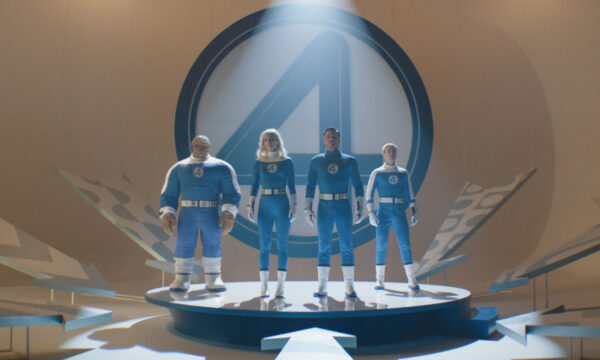
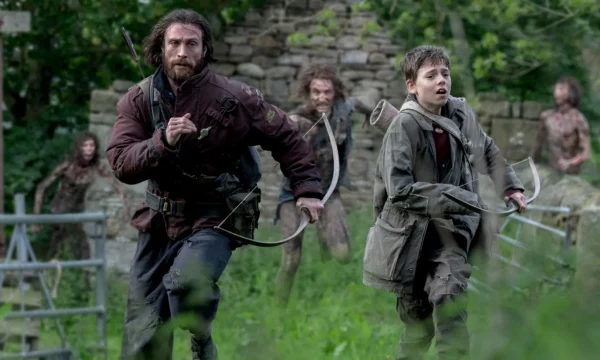
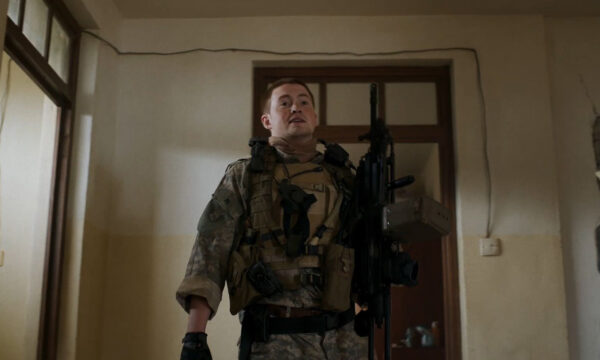
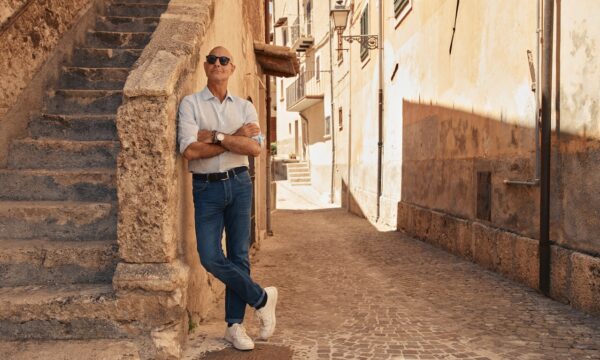
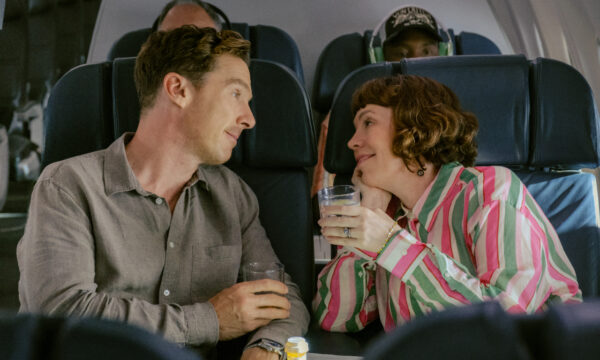
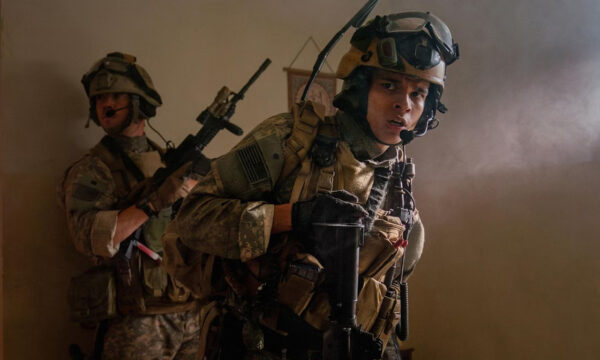
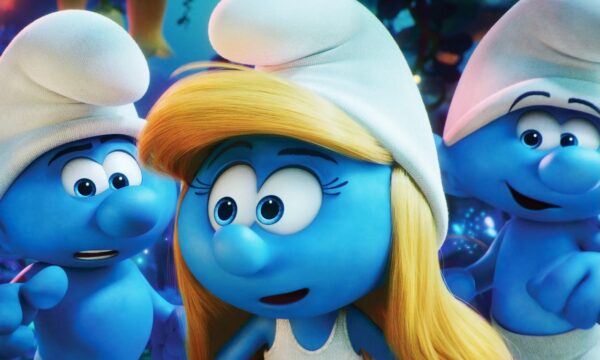
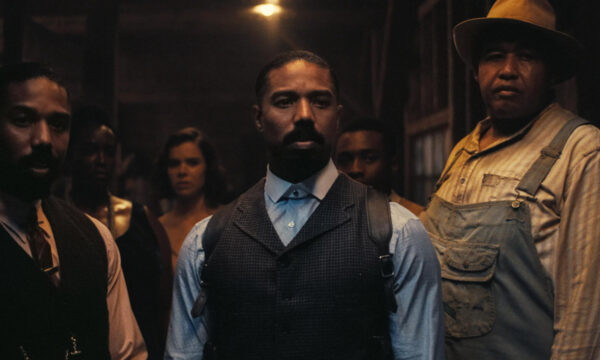
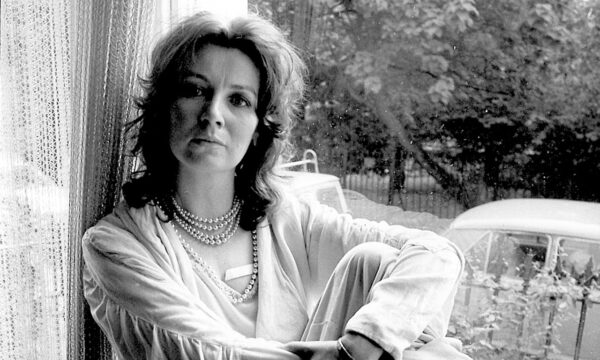














Facebook
Twitter
Instagram
YouTube
RSS